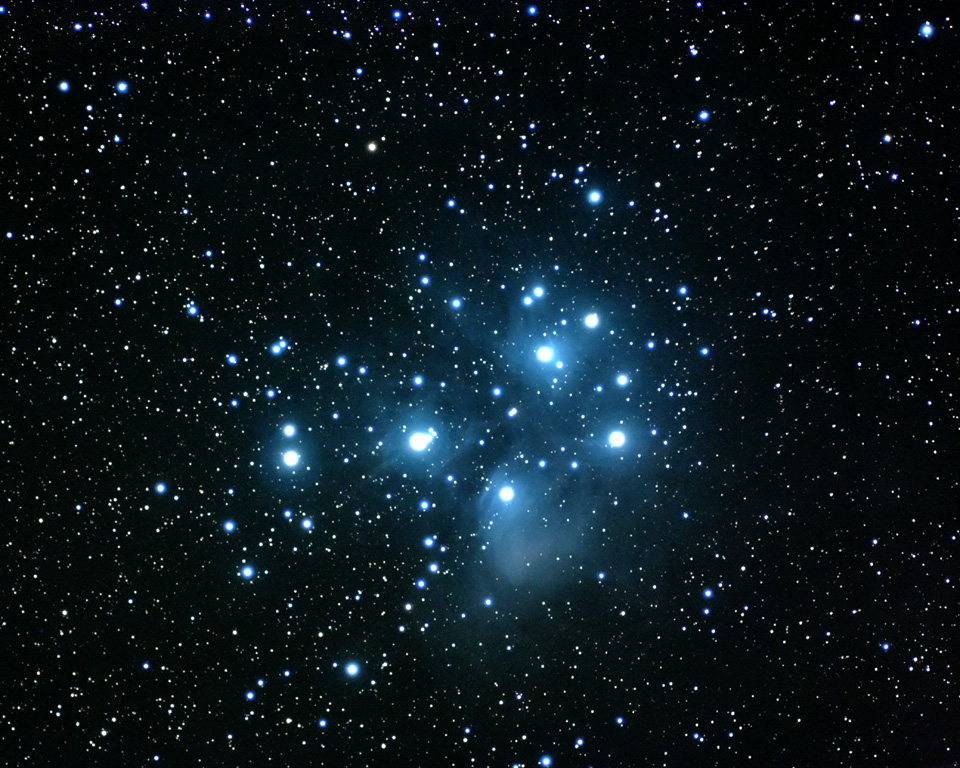| NOTES |
DATE:
|
Sunday, September 4, 2005
|
TIME:
|
12:50 - 1:03 am EDT
|
CAMERA:
|
Canon
EOS 300D Digital Rebel |
EXPOSURE:
|
3 x 5 minutes @ ISO 800
|
LOCATION:
|
Black Forest Star Party (Cherry Springs State Park,
Potter County, Pennsylvania) |
INSTRUMENT:
|
Tele Vue Pronto 70 mm refractor (with Focal Reducer/Field
Flattener) piggybacked on 10" LX200. |
PROCESSING:
|
Dark frame subtracted, aligned, stacked,
enhanced and cropped with
Adobe Photoshop 7.0 |
COMMENTS:
|
The
Pleiades is the most conspicuous and
beautiful open cluster in our celestial neighborhood. You've
probably
seen it yourself, but never realized it. Simply follow the three
belt
stars of Orion up and to the right. First you'll come across the
red star
Aldebaran and the V-shaped Hyades Cluster. Continue drawing your
line and
you’re sure to stumble across a compact group of stars that looks like
a mini
dipper. The stars of the Pleiades were all born together in a
single
star-forming event that occurred about 70 million years ago. It
was once
thought that the blue reflection nebula that surrounds some of the
Pleiads was
left over material from this event. However, astronomers
discovered that
the cluster and nebula are traveling in different directions; something
you
wouldn't expect if the two formed together. Only 420 light-years
away,
it's an incredible sight no matter what instrument you use. |
|

